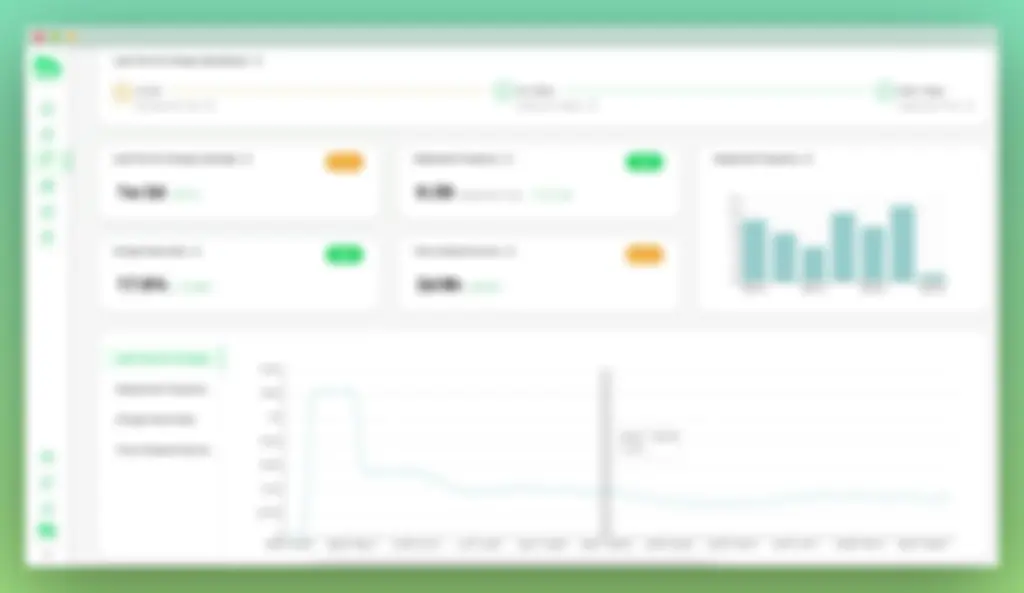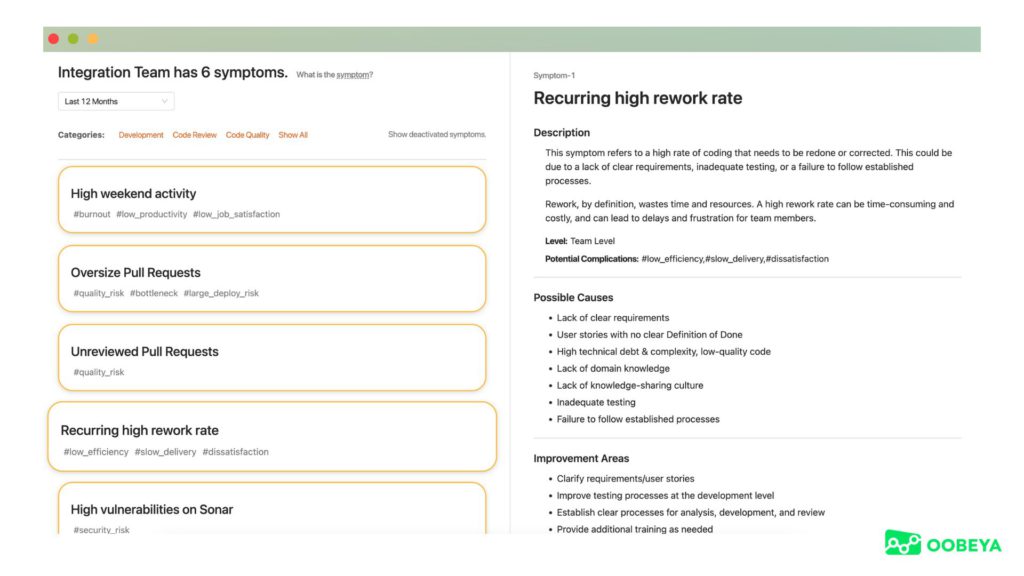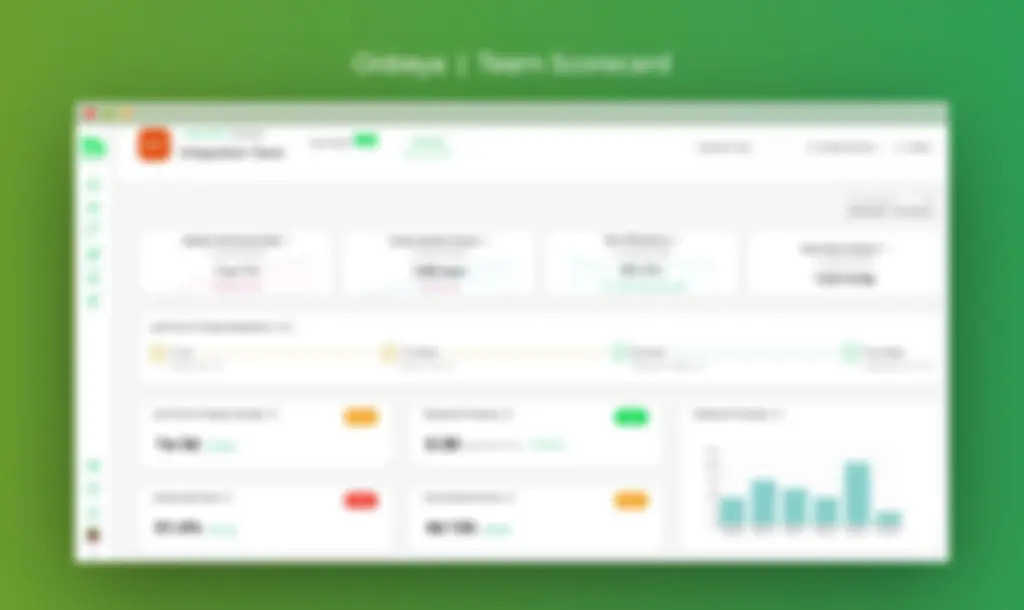For modern software teams, data-driven decision-making is the cornerstone of achieving engineering excellence. By integrating the Oobeya Software Engineering Intelligence Platform with Microsoft Azure DevOps, you can seamlessly measure DORA metrics and other key engineering metrics, and enhance your team performance and well-being. Whether you are an engineering manager, a DevOps enthusiast, a Platform Engineer, or a development team lead, this integration simplifies tracking and improving your software delivery performance.
The Importance of Tracking Azure DevOps DORA Metrics
DORA (DevOps Research and Assessment) metrics are vital indicators of an organization's software delivery performance. They include:
- Deployment Frequency: How often an organization successfully releases to production.
- Lead Time for Changes: The time it takes for a commit to get into production.
- Mean Time to Recovery: The time it takes to recover from a failure in production.
- Change Failure Rate: The percentage of deployments causing a failure in production.
 Oobeya Azure DevOps DORA Metrics
Oobeya Azure DevOps DORA Metrics
Why DORA Metrics Matter
- Continuous Improvement: By tracking these metrics, teams can identify bottlenecks, streamline processes, and continuously improve their delivery cycles.
- Business Impact: Faster and more reliable delivery can lead to a competitive advantage, improved customer satisfaction, and higher business agility.
- Team Performance: Understanding these metrics helps in gauging team performance and providing actionable insights to enhance productivity and efficiency.
Visibility into Engineering Flow: Why It Matters
Engineering teams need visibility into their flow to ensure smooth operations and high-quality outcomes. Here’s why visibility is crucial:
- Identify Bottlenecks: Clear visibility helps in pinpointing stages where delays occur, enabling teams to address and resolve issues promptly.
- Optimize Processes: With a transparent view of workflows, teams can optimize processes for better efficiency and reduced waste.
- Enhance Collaboration: Visibility fosters better communication and collaboration among team members, ensuring everyone is on the same page.
- Boost Morale: When teams see the direct impact of their work on project success, it boosts morale and motivation.
Oobeya: A Strong Partner of the Azure DevOps Ecosystem
Oobeya is a powerful ally for organizations using Azure DevOps. By integrating with Azure DevOps, Oobeya enhances your ability to track and improve engineering performance through comprehensive metrics and insights. Here’s why Oobeya stands out:
- Seamless Integration: Oobeya connects effortlessly with Azure DevOps, allowing you to integrate your repositories, pipelines, releases, and boards in minutes by generating one access token (only read permissions for selected scopes are required).
- Robust Metrics: Oobeya provides accurate DORA metrics and other key metrics, helping you make data-driven decisions.
- Aligning with the SPACE Framework: Oobeya automatically detects the symptoms of inefficiencies and bottlenecks within the software development and delivery processes, offering a detailed symptoms catalog that resonates with SPACE dimensions. Oobeya provides actionable insights into Satisfaction and well-being, Performance, Activity, Communication and collaboration, Efficiency and flow.
 Oobeya Symptoms
- Customization: Tailor your integration by selecting specific pipelines, stages, environments, release strategies (git-flow, long-lived branches, git tags), and development practices (trunk-based or pull-request-based) to suit your organization’s needs.
- Comprehensive Reporting: Gain deep insights through advanced reporting features, helping you analyze and improve every aspect of your development process on a multi-dimensional level.
- ADO Version Support: Oobeya supports both Azure DevOps Cloud and Server environments, ensuring compatibility across different setups.
Getting Started: A Comprehensive Guide
Step 1: Provide an Azure DevOps Token
To begin, generate an Azure DevOps (ADO) personal access token. This token allows Oobeya to access your repositories, pipelines, pull requests, and work items. Oobeya integration requires only read permissions for the selected scopes. Learn more about Azure DevOps & Oobeya Integration
Step 2: Connect Your Accounts
Link your Oobeya account to your Azure DevOps environment. This process is straightforward and can be completed in minutes.
Step 3: Start Analyzing Your Data
Choose your repositories and pipelines to analyze. Specify your release strategy and development practices to ensure accurate metrics.
Advanced Features of Oobeya and Azure DevOps Integration
1. Comprehensive Azure DevOps DORA Metrics Measurement For Different Workflows And Practices
Oobeya enables you to:
- Add Multiple Deployment Pipelines: Aggregate DORA metrics across multiple deployment pipelines within a single repository. (If you have a repository and multiple delivery pipelines linked to it.)
- Select Pipelines from Different Projects: Fine-tune DORA metrics calculation by selecting pipelines and releases from different projects. (If you manage pipeline definitions and runs in a different Azure DevOps project.)
- Support Various Release and Development Strategies: Measure DORA metrics accurately whether you use Gitflow, long-lived branches, or Git tags. Specify whether your team follows a trunk-based or pull-request-driven development practice.
2. Advanced Data Analytics and Reporting
With Oobeya, you can:
- Analyze Coding, Code Review, and Delivery Activities: Generate insightful reports by analyzing repositories, commits, pull requests, and delivery pipelines across the Azure DevOps workflow.
- Analyze Agile Boards: Generate insightful reports by analyzing scrum and kanban boards from Azure Boards.
- Group Analysis Results: View all metrics at various levels, including repository, product, team, and organization. (Note that Oobeya is a team-focused platform.)
 Oobeya Team Scorecard Metrics
Oobeya Team Scorecard Metrics
Additional Integrations and Features
Azure DevOps Cloud and Server Support
Oobeya supports both Azure DevOps Cloud and Server environments, ensuring flexibility for different organizational setups.
Comprehensive Module Compatibility
The platform works seamlessly with Azure DevOps Repos, Azure Boards, Pipelines, and Releases modules.
Microsoft Entra (Azure AD) Integration
For enhanced security and streamlined user management, Oobeya integrates with Microsoft Entra (Azure AD). This enables single sign-on (SSO) and robust authentication settings.
Resources to Get You Started
- Learn more about Azure DevOps & Oobeya Integration
- How To Measure DORA Metrics for Azure DevOps
- Azure AD Integration
Conclusion
Integrating Oobeya with Azure DevOps transforms how you measure and improve your software engineering performance. With robust support for DORA metrics, customizable analytics, and comprehensive reporting, Oobeya empowers your team to achieve new levels of efficiency and reliability. Start your integration today and unlock the full potential of your software development and delivery process.

